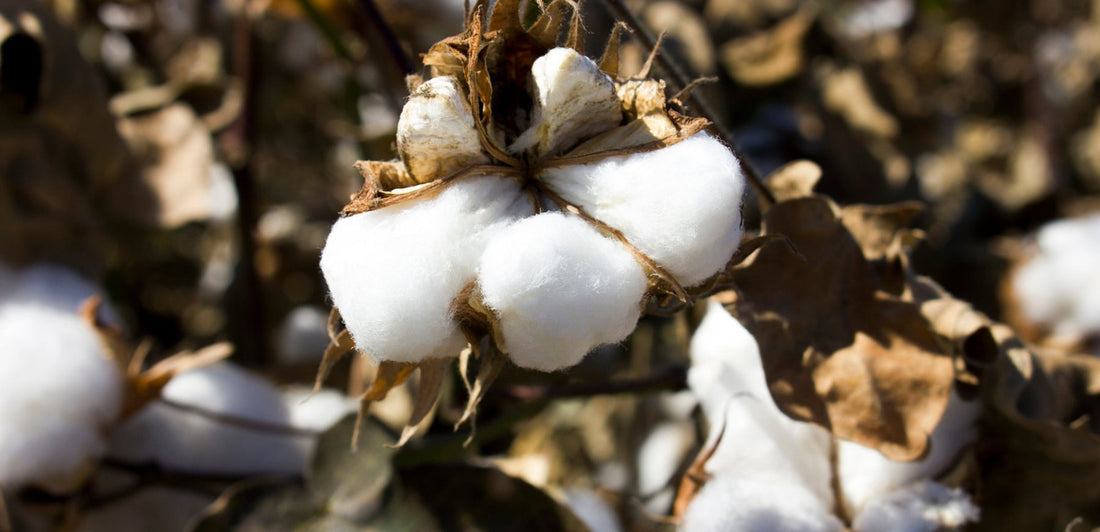There is a case to be made that sustainable fashion brands overuse organic cotton. It’s certainly something that TWOTHIRDS thinks about; we’re not shy about the fact that organic cotton is a baseline rather than a “best in class” for sustainability.
In a nutshell, this is why we cut back on the percentage of organic cotton in our product line during 2022. We know there are more sustainable options out there. But that’s not the only reason we looked at reducing our use of organic cotton.
The Case For Fibre Diversity
When companies only employ a particular type of person, they lose out on valuable skills that only people from other backgrounds can bring to the table. Diversity is good for everyone and everything. It might sound weird to say it, but the same is true for fabrics! When a brand relies too much on one material, they risk falling into the same extractive pattern that is costing the planet dearly, especially when this fabric involves land use. Organic cotton, while miles better for the environment than synthetics, is not a circular fibre: it has to be made from scratch. Imagine the good it could do the planet to therefore swap out organic cotton for recycled cotton? Fibres like Recover™ cotton, while relying on a “carrier fibre” for quality purposes, can help us to achieve that.
We’ve long viewed it as essential to diversify our material mix, so that we can bring in more recycled products that contribute to the circular economy. One such way we’ve tried to do this is through deadstock collections - picking up excess fabrics from the textile industry that would otherwise go to landfill. We view this as one of the most sustainable material sources in our entire supply chain, more advantageous than using virgin organic cotton.
In 2022 We Planned To Reduce Our Organic Cotton Use To 50%
Our Eco Report for 2021 said we intended to “reduce the use of virgin organic cotton, ideally to 50%”. In the end we came up a little short: cutting back our organic cotton use from 59% to 53%.
This doesn’t mean we’re not happy with what we’ve done, as we have shown intent to improve the sustainability of our fabric mix! But on the other hand, it shows that a lot of work still remains to be done, as we phase out organic cotton in favour of more cutting-edge fibres.
Second and third to our organic cotton use in 2022 were TENCEL™ Lyocell and Recycled Polyester, two highly sustainable fibres (though it should be noted that recycled polyester does shed microfibres).
Why do we use organic cotton at all?
-
Cost
Because organic cotton has been a byword for sustainability, everyone wants to get their hands on it. This has two knock-on effects: 1) it should encourage farmers to switch from conventional to organic farming and 2) it can actually drive up the price of organic cotton overall (the two are interlinked). For now, organic cotton, which makes up 1.4% of global cotton production, continues to be relatively affordable vs. luxury sustainable fibres. Organic cotton is more expensive than conventional cotton, but the environmental benefits are a valuable trade-off.
-
Better Than Cotton
Organic cotton is still better for the environment than conventional cotton. This is because it avoids the use of artificial pesticides and fertilisers, which contribute to greenhouse gas emissions.
One of the most shocking stats around cotton cultivation is that it uses up 2.4% of the world’s arable land, yet requires a mammoth 22.5% of the world’s insecticides. This is extremely harmful to biodiversity, contributing to species and plant die-off.
-
Versatile
We can use soft organic cotton to make t-shirts, outerwear, sweaters, spring knitwear and even trainers! Because of its natural breathability, softness, and recognised sustainability, organic cotton is a versatile option for slow fashion brands like us.
-
It’s What We Know!
Organic cotton is a familiar fabric for us. We appreciate the soft texture and so does our ocean-loving community! We also use it in some technical garments such as our activewear and seamless underwear styles, where a recycled or wood-based fibre would perhaps not yield the same quality and stretch. It’s hard not to love organic cotton as a fashion lover, as it enables beautiful styles to be more sustainable than their fast fashion cousins.
Organic Cotton Spotlight
Here are three products that showcase organic cotton’s versatility and potential.
1. Samothrace — Cappuccino

A polo shirt with a polished look, the Samothrace comes in a sumptuous cappuccino colour. The pique fabric creates that unmistakable polo shirt material, showcasing how organic cotton fibres can be woven in different ways to engender a variety of effects.
2. Penida — Duck Green

The Penida takes this idea one step further - by turning organic cotton into fresh waffles! Well, a (non-edible) waffle fabric at least, which is a supersoft water absorbent fabric that also aids heat retention.
Here it comes in the form of a beautiful sweatshirt for men that’ll keep you warm on the coldest summer nights.
3. Gavdos — Stripes

The ultimate pair of organic cotton dungarees, the Gavdos feature smart pinstripes, making one of the most practical items of clothing a very stylish one too. But this organic cotton style comes with a twist - it’s actually made from 33.3% recycled cotton and 33.3% recycled polyester too! Showing how circular economy principles (recycling, upcycling and reusing) can already be applied to styles that would normally be 100% organic cotton.
Conclusion
We cut back on organic cotton in 2022 because we wanted to diversify our fabric mix, while exploring more sustainable fabric options. Organic cotton is environmentally superior to many conventional fashion materials, such as conventional cotton, virgin polyester and regular viscose. For that reason, we consider it to be a minimum requirement for our styles, shunning the more damaging fashion materials. Organic cotton’s versatility and comfort still make it an attractive option for many different slow fashion styles.








